-
New to linux / knoppix
I am new to Linux and would like to know a geat beginner's site / pdf / book that will teach me the ins & outs of linux. I am a Mac (OS X) user and getting into Unix / x11.
Please Help a newbie!
-
Senior Member
registered user
I'm fairly new also, and I came from a Windows environment. IMO, as far as a new end-user interface is concerned, Linux is essentially where Windows was back in 1990. KDE has a nice, intuitive graphical interface, and there are a number of good applications, but over and over I find that if I want to do anything important, I have to use the shell, just as I had to use DOS to do anything important in Windows back in 1990.
There are several shells, but reality is that everyone uses BASH, as far as I can tell. If you ask for help in this forum, more likely than not, it will come in the form of a series of text commands that you have to enter in a shell console. Linux seems to assume that there will be a skilled administrator keeping everything running and keeping the rest of us happy, while the rest of us (users) do our stuff within the limitations set out by the administrator. Generally speaking, users don't get to decide how things will run - the administrator does that, and the system keeps folks from messing things up too badly. In the autonomous PC world, particularly with a live OS like Knoppix, you have to be both the administrator and the user. To do anything important, you have to log in as root, which gives you administrative privileges. To do this, as far as my simple mind comprehends, you either type su [enter] to be root during the entire console session, or, if you only want to execute one command as administrator, you type sudo commandname, to execute 'commandname' as root.
There is a wiki on this forum (see the docs tab above) with a number of helpful articles and hints. Within the BASH console, you can type help to get a listing of basic BASH commands. Once you narrow down what command you need, you can type man commandname, to find out the syntax and flags associated with that commandname.
If you want a book to refer to, there is an O'Reilly's book (Linux in a Nutshell) that has one of the better explanations I've seen. Unlike the "dummies" and "idiot's" books, it takes a no-nonsense approach that won't insult your intelligence. Most good brick and mortar bookstores or college bookstores sell it for about $40, but I've seen it on Amazon in the low $20s.
http://www.amazon.com/exec/obidos/AS...904650-9088148
Obviously, I've oversimplified and probably offended some Linux fans. It's an extremely powerful operating system that far exceeds my capabilities, but the opinions above are intended to reflect the perspective of a new user.
-
Senior Member
registered user

Originally Posted by
j.drake
In the autonomous PC world, particularly with a live OS like Knoppix, you have to be both the administrator and the user. To do anything important, you have to log in as root, which gives you administrative privileges. To do this, as far as my simple mind comprehends, you either type su [enter] to be root during the entire console session, or, if you only want to execute one command as administrator, you type sudo commandname, to execute 'commandname' as root.
I'd like to clarify here that you will almost never be told to log in as root. Do not log in as root. True- many commands need to be issued as root- which you explained very well, but you do not need to re-login. M$ should really think about adding that to their list of *ahem* features. 
I too prefer the nutshell series of books. Don't waste your time on the "for dummies" books-you just graduate from dummy to idiot. Some good places to get Linux info:
Lots and lots of documentation here:
http://www.tldp.org
Lots of documentation and links here:
http://yolinux.com/
Another good site:
http://www.linux.ie/newusers/beginners-linux-guide/
But perhaps my favorite of all.....(drumroll please)
http://linux-newbie.sunsite.dk/
So - think NIX. Alot of what you learn here will of course apply directly to OSX.
-
Senior Member
registered user
It is indeed a fact that alot you want to do has to be done using command-line. I dont like that too, but its a fact... KDE, and others, try to make it easier to work without commandline, but they dont fully succeed. I think one of the main reasons for this is that the *nix commandline is much more powerfull than the DOS-one, so its easy to switch from DOS to lets say explorer, cuz you dont lose that much functionallity, but its almost impossible to do as much graphical as can be done on the *nix commandline...
-
Senior Member
registered user

Originally Posted by
rickenbacherus
I'd like to clarify here that you will almost never be told to log in as root. Do not log in as root. True- many commands need to be issued as root- which you explained very well, but you do not need to re-login. M$ should really think about adding that to their list of *ahem* features.

Yes, thank you. I didn't make that clear enough. Being primarily a Windows user, I feel quite comfortable leaping headfirst into operations that Linux would reserve to the root administrator, and my default reaction is to get annoyed if I'm locked out of doing what I need to do. It's a culture change that I'm still having to get used to. Still, you will see over and over again that when problems arise, a lot of the diagnostic and repair issues on this forum (e.g., "Help, I can't get my whatsit to work in Knoppix"), will involve implementing a fix or a diagnostic from the console with BASH. More often that not, as far as I can tell, the fix, if it is powerful, will require logging in as root. True, if you're comfortable hosing around with your system and don't have a lot to lose, and there aren't other people who will pay the price of your bad decisions or lack of skill, you can do anything as root. However, that's considered extremely reckless and foolhardy. ALWAYS, even as a single user/single computer user, try first to do the fix at the user level, and do a root command only if you cannot do so at the user level.
As I said before, Linux seems to be set up with the idea that a skilled administrator will deal with these issues on behalf of other users (sort of a benevolent dictator/guru), and that this "superuser" power comes with the responsibility for maintaining the integrity of the system and the usability for the users. Unlike Windows users, who regard half a dozen reboots a week and 6-7 crises a year as absolutely normal (those are XP numbers, BTW, multiply by 10 for Win 9X), Linux users generally tend to consider this a problem, and will start to question the capabilities of a system admin who allows this to take place. Even within the context of a single user/single computer, this administrative culture carries over in Linux, such that you literally switch hats from being a user to an administrator, and back again.
BTW, Rickenbacherus, WinXP and 2000 does allow for a certain level of this culture, but you have to deliberately set it up that way. It's the default in Linux, but it requires effort to do so in Windows. Our tech staff at work tried to set me up with a user-level account in Windows, and I was not a happy camper. Finally, I was granted administrative rights to my own computer, but not to the network, and I'm quite happy with that. It's really hard for advanced Windows users to accept the old mainframe culture. 
Another thing you'll find about BASH that I forgot to mention, is that the commands are not at all intuitive, and that they have weird names that some weird geeky person thought up, and you just have to memorize them (e.g., "cloop", "grep" - WTH did these names come from??) Oftentimes you will find that the appropriate command is not at all obvious. For example, recently, Mr. Rickenbacherus saved my sorry hide when my mobo blew out and I had to RMA my computer for repairs. BIOS wasn't recognizing my HDs, so I couldn't run Windows or Mandrake, but I could run Knoppix. I had about 60 gig of data on one drive that I knew I was going to lose unless I could find some way for Knoppix to copy it over to another drive (many files were too large to burn onto CD). Thankfully, Mr. R (I assume, anyway - I don't mean to be sexist if you're female) told me about a cat command that allowed the wholesale transfer from one disk to the other. Neither the man cat nor the entry for cat in the O'Reilly book mentioned above indicated that it had this capability - in fact, it appears as though the command was intended to do something else entirely. Anyway, it worked, my computer is back, the HD was re-imaged despite the fact that nothing was wrong with it, I updated my software (including the 30-40 WinXP security patches that came out since I bought the computer this spring), my data is back on it - Thank you R  Life is good.
Life is good.
-
Senior Member
registered user

Originally Posted by
j.drake
Neither the man cat nor the entry for cat in the O'Reilly book mentioned above indicated that it had this capability - in fact, it appears as though the command was intended to do something else entirely.
True- man pages usually just tell you the correct syntax and may offer a few usage examples. You really need to find a how-to for many of the commands available in order to realize their full potential. All I can say is that it does get easier. Imagine where you would be had you spent all this time using Linux instead of win!
Glad you got your pc back- what was wrong anyway?
-
Senior Member
registered user
Similar Threads
-
By justinscouting in forum MS Windows & New to Linux
Replies: 6
Last Post: 03-30-2005, 09:45 AM
-
By baller2090 in forum Hardware & Booting
Replies: 1
Last Post: 03-08-2005, 03:10 AM
-
By istoleapig in forum Hardware & Booting
Replies: 2
Last Post: 02-19-2005, 09:28 AM
-
By nonzero in forum General Support
Replies: 4
Last Post: 06-05-2004, 09:23 PM
-
By dewd in forum The Lounge
Replies: 0
Last Post: 02-16-2004, 02:19 AM
 Posting Permissions
Posting Permissions
- You may not post new threads
- You may not post replies
- You may not post attachments
- You may not edit your posts
-
Forum Rules

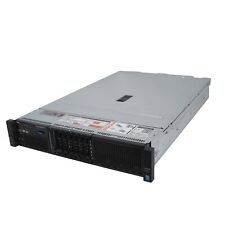
Dell R730 w/ 2x E5-2650v3 10c, 192GB (12x16GB) RAM, H730 Mini, 2x 750W PSU
$349.99
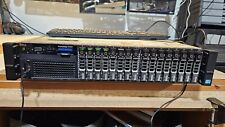
Dell PowerEdge R720 Server - 2x8c CPU,256Gb RAM, 128Gb SSD/3x600Gb SAS, Proxmox
$340.00
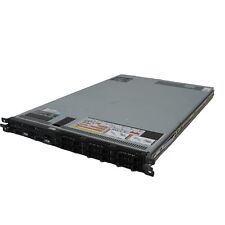
Dell PowerEdge R620 Rack Server
$71.99
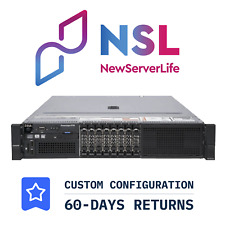
DELL PowerEdge R730 Server 2x E5-2690v3 2.6GHz =24 Cores 32GB H730 4xRJ45
$274.00
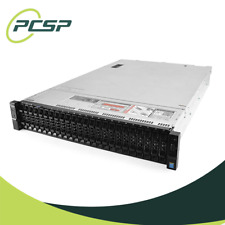
Dell PowerEdge R730XD 28 Core Server 2X Xeon E5-2680 V4 H730 128GB RAM No HDD
$389.99
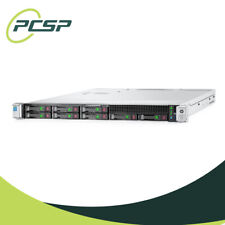
HP Proliant DL360 Gen9 28 Core SFF Server 2X E5-2680 V4 16GB RAM P440ar No HDD
$196.95
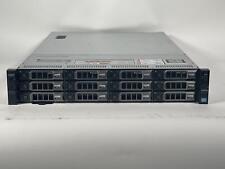
Dell PowerEdge R720XD Xeon E5-2680 V2 2.8GHz 20 Cores 256GB RAM 12x4TB
$510.00
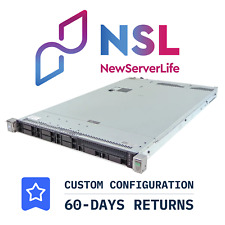
HP ProLiant DL360 Gen9 Server 2x E5-2699v3 2.3GHz =36 Cores 32GB P440AR 4xRJ45
$309.00
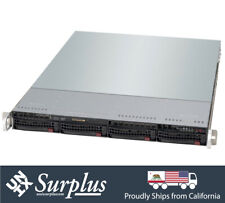
1U Server (6-8 VM's) Vsphere VPS Short Depth 20" XEON 3.5Ghz 32GB RAM X10SLM-F
$199.00



 Reply With Quote
Reply With Quote









